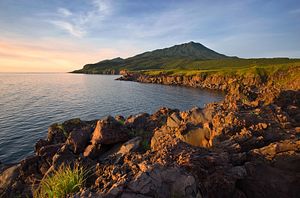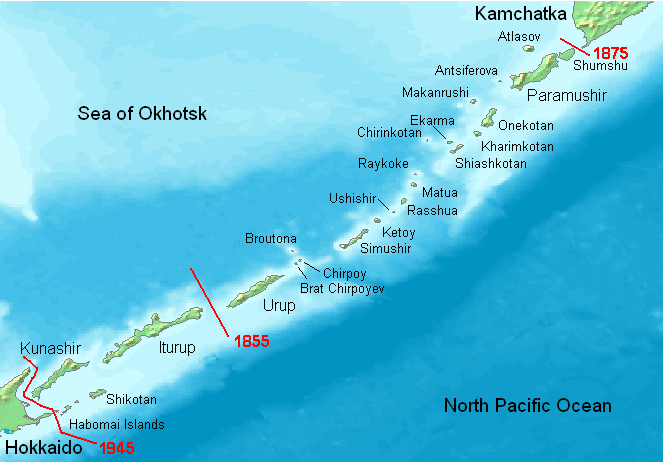Monday, while visiting Vladivostok, in Russia’s Far East, Russian Defense Minister Sergei Shoigu ordered an acceleration of military and civilian infrastructure construction on the disputed Kuril Islands. While the defense ministry didn’t offer many details of his orders, it isn’t difficult to connect the announcement–guaranteed to annoy Japan, which disputes Russian sovereignty of the islands–to the recent visit by Japanese Prime Minister Shinzo Abe to Ukraine. While in Ukraine, Abe declared his support for President Petro Poroshenko.
This isn’t the first time Ukraine has come up as a point of tension between Russia and Japan, nor the first time Moscow has used the islands to irritate Tokyo. Last summer, after Japan joined Western nations in imposing sanctions on Russia, Russia held military drills in the Kurils.
The Kurils, as they are called in Russia, are known as the Northern Territories in Japan and stretch about 810 miles northeast from the island of Hokkaido to Russia’s Kamchatka. To the west of the islands lies the Sea of Okhotsk and to the east, the northern Pacific. The two southernmost islands–Kunashir (known in Japanese as Kunashiri) and Iturup (Etorofu)–and two sets of islets–Shikotan and the Habomai islands–have been the focus of a dispute between Russia and Japan for more than 60 years.
Both Russia and Japan bring treaties to the table to support their claims for sovereignty.
In the 1855 Treaty of Shimoda which established diplomatic relations between the two, Russia outlined the boundary with Japan as lying between Iturup and Urup. The islands south of Iturup were not specifically mentioned. Subsequent treaties, in 1875, 1905, and 1945 all lead to different divisions.
During World War II, Russia occupied the Kurils, including the southernmost islands, expelling nearly 17,000 Japanese citizens.
The 1951 Treaty of San Francisco, which officially ended the war between Japan and the Allies, included Japanese renunciation of its claims to the Kuriles. But Russia never signed the treaty. Russia says various international agreements support its claim to the islands, such as the 1945 Yalta Agreement which states that the “Kuril Islands shall be handed over to the Soviet Union,” presumably as a reward for a Soviet declaration of war against Japan, come the defeat of Germany.
While relations between Russia and Japan were restored in 1956, the two have never actually signed a peace treaty.
Russia has a military presence on Iturup and opened an international airport there in 2014. The Russian population of the disputed islands is now upwards of 30,000 and Russia routinely conducts military flights over the islands. While Russian President Vladimir Putin has, in the past, made statements that do not entirely rule out returning the islands to Japan, events over the past year have functionally squashed any possibility of a detente on the issue.
Japan supported G-7 sanctions on Russia, and Russia’s ostracization from the former G-8. Japan has also not recognized Russian claims to Crimea. While Abe has invited Putin to visit Japan “at an appropriate time,” few think it will actually happen this year. Japan will host the G-7 summit in 2016 and most agree that Russia will still be excluded from the meeting.

































